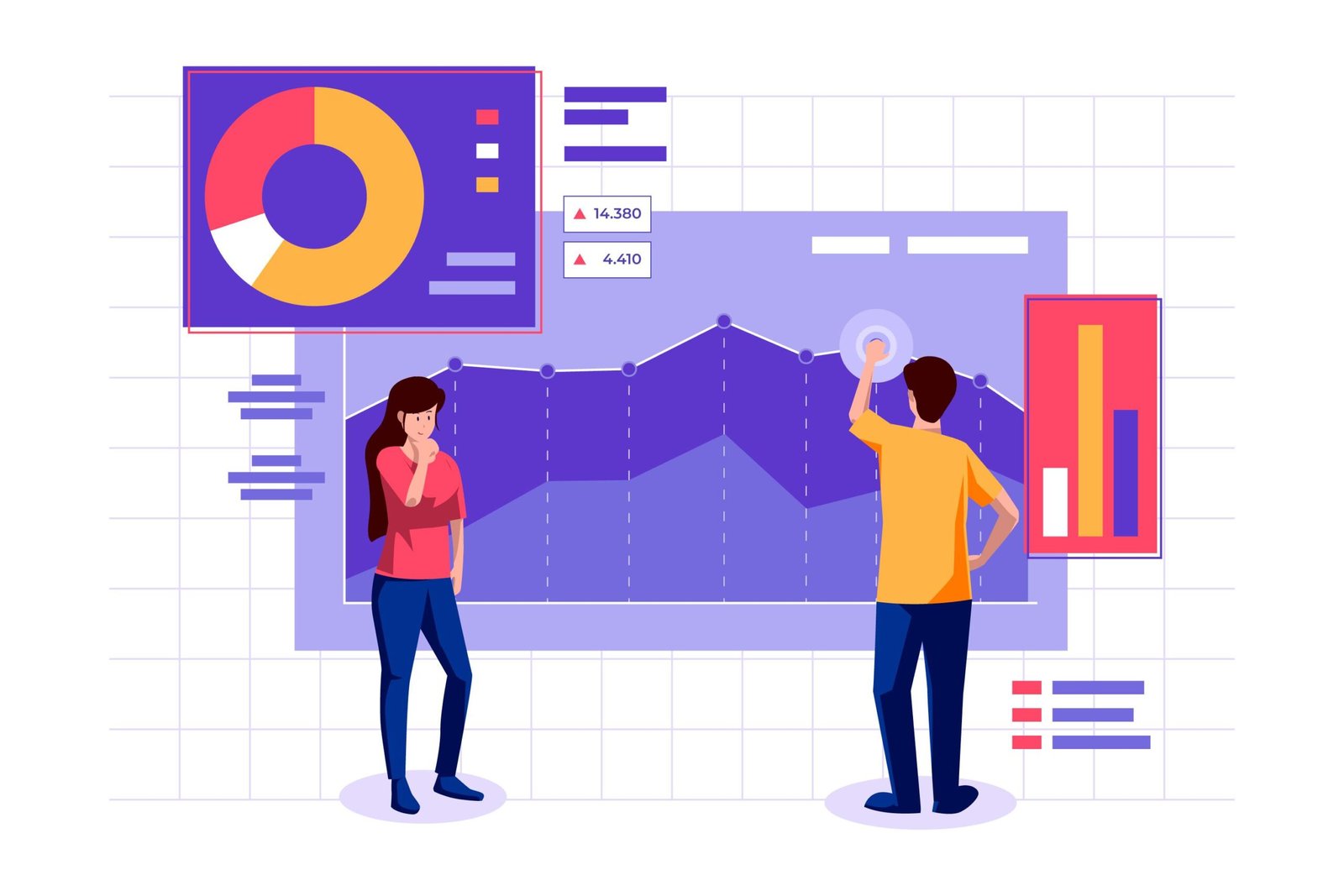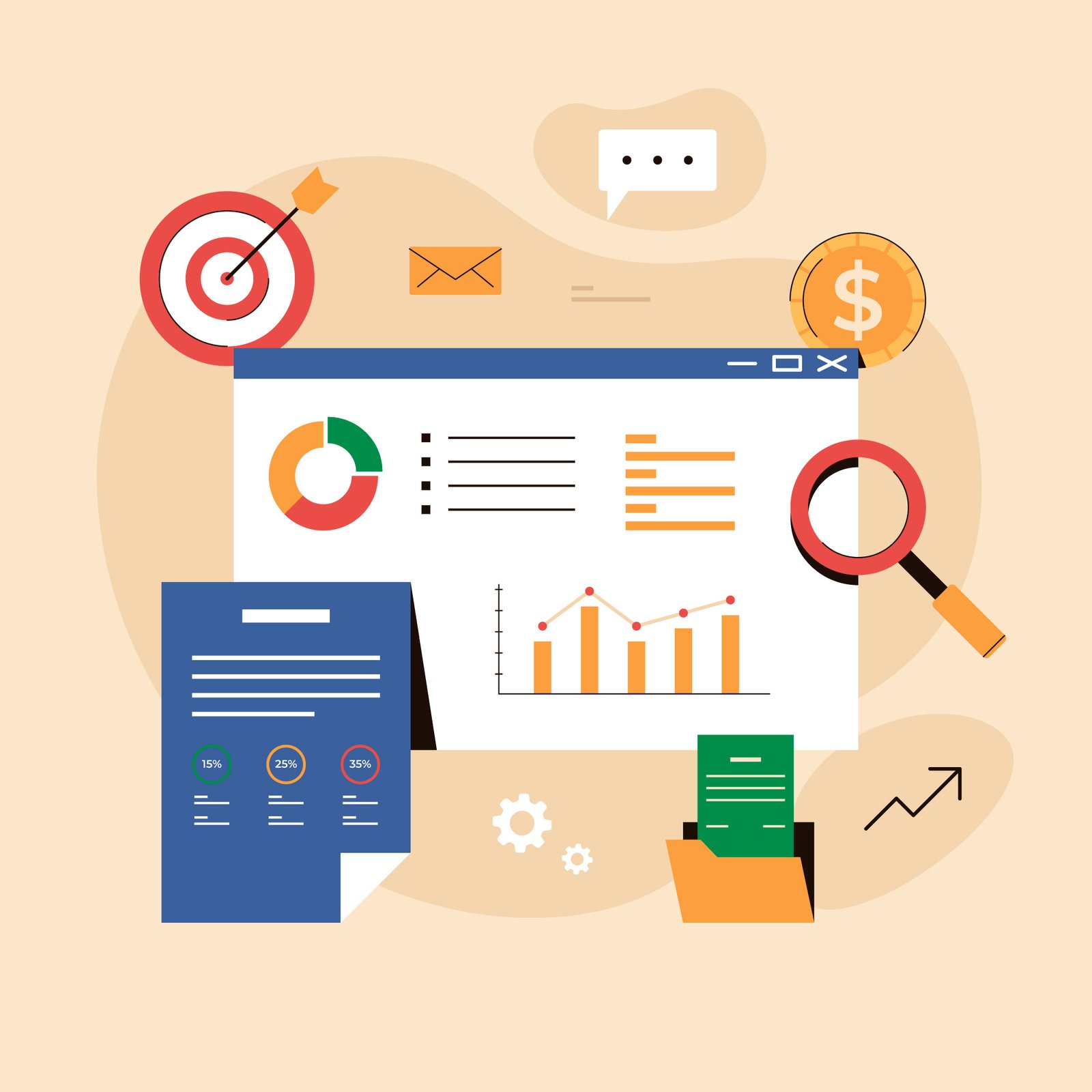- Retail SEO Explained : The Ultimate Beginner’s Guide - June 17, 2025
- Keyword Research for SEO in 2025: The Complete Step-by-Step Guide - June 16, 2025
- How Do Search Engines Work? The Beginners Guide - June 2, 2025
What is a CRM? A Beginner’s Guide
Customer Relationship Management (CRM) is a powerful technology solution that helps businesses manage, track, and optimize their interactions with current and potential customers. It acts as a centralized hub where customer data, communication history, and business processes come together.
A CRM system serves three critical functions:
- Data Organization: Stores customer contact details, purchase history, and communication records
- Process Automation: Streamlines repetitive tasks like email follow-ups and appointment scheduling
- Analytics: Provides insights into customer behavior and business performance
Your CRM becomes the single source of truth for customer information, enabling teams across your organization to:
- Access real-time customer data
- Track sales opportunities
- Monitor customer service issues
- Analyze marketing campaign effectiveness
- Identify trends and patterns in customer behavior
The real strength of CRM comes when it takes hard customer data and turns it into usable knowledge. Sales teams can identify opportunities sooner, marketing teams can craft focused campaigns, and customer service agents can provide tailored service.
For small firms and large corporations alike, CRM software has become a go-to tool for establishing long-term customer relationships and fuelling growth. They break down data siloes, automate manual tasks, and enable teams to make informed decisions with complete customer insights.

A CRM system works by three primary elements: data collection, organization, and analysis. The system captures customer interactions automatically across multiple touchpoints – emails, phone calls, social media, website visits, and purchase history.
1. Data Collection Process
The CRM system gathers data by different automated processes:
Automated tracking of customer communications
Recording of sales interactions and follow-ups
Capturing website behavior and engagement metrics
Storing purchase history and transaction details
2. Data Organization Capabilities
After the data is gathered, the CRM system organizes it through certain capabilities:
Contact management with rich customer profiles
Deal stages and sales pipeline tracking
Management of tasks and scheduling
Storage and sharing of documents
3. Data Analysis Utilizing Integrated Analytics Capabilities
The gathered data turns into actionable information using built-in analytics capabilities. Sales teams can track trends in customer activity, monitor deal stages, and gauge performance indicators. Marketing teams get to analyze campaign performance and customer segmentation capabilities.
Key Features of Contemporary CRM Systems:
Contemporary CRM systems have a number of key features to facilitate analysis of data:
Lead qualification and scoring
Integration with email marketing
Forecasting sales capabilities
Modifiable dashboards and reports
Mobile access
Integration with third-party applications
Ability to create automated workflows
4. Synchronization of Data in Real-time Using Cloud Technology
Cloud technology is utilized by CRM systems for real-time synchronization of data between all users. Team members instantly access updated data, facilitating collaborative customer interactions and well-informed decision-making.
5. Automated Features for Operational Efficiency
Automated features within the system deal with repetitive activities, freeing team members to pursue relationship-building processes.
6. Strengthening Customer Relationships by Integrating AI
The future of CRM is the infusion of artificial intelligence (AI), which has the potential to transform the manner in which businesses operate their customer relationships. With AI technologies, businesses can sift through large volumes of customer data to deliver tailored experiences, anticipate customer behavior, and automate responses. This movement towards AI-powered CRM is not merely a fad but a necessity in the digital era where customer expectations change on a continuous basis.

Benefits Of Using A CRM Tool
A RM tool transforms how businesses handle customer relationships and drive sales growth. Here’s how implementing a CRM system benefits your organization:
Sales Performance Enhancement
- Track sales pipeline stages in real-time
- Identify bottlenecks and opportunities quickly
- Automate follow-ups with prospects
- Set data-driven sales targets
- Monitor individual and team performance metrics
Marketing Campaign Optimization
- Segment customers based on behavior patterns
- Create targeted email campaigns
- Track campaign performance metrics
- Personalize content for different audience groups
- A/B test marketing messages effectively
Customer Experience Improvement
- Access complete customer interaction history
- Respond to inquiries faster
- Provide personalized service
- Anticipate customer needs
- Build stronger customer relationships
Business Intelligence
- Generate detailed sales reports
- Analyze customer buying patterns
- Predict future sales trends
- Make data-backed decisions
- Measure ROI on marketing efforts
CRM systems enable sales teams to close deals faster by automating routine tasks and providing valuable insights. Marketing teams can create highly targeted campaigns using detailed customer data, resulting in higher conversion rates. The system’s analytics capabilities help businesses understand customer behavior patterns and adjust strategies accordingly.
Companies using CRM tools report up to 29% increase in sales and 34% improvement in customer satisfaction. The automation features save an average of 14.5% of sales representatives’ time, allowing them to focus on building meaningful customer relationships.
There are three different types of CRM systems, each catering to individual business requirements and goals:
1. Operational CRM
Operational CRMs concentrate on facilitating daily customer transactions and automating several processes in the organization. Some of the important functionalities of operational CRMs are as follows:
Simplifies daily customer interactions
Automates sales, marketing, and service processes
Collaborates with lead generation and conversion
Processes customer support requests and service enquiries
Examples: Salesforce Sales Cloud, HubSpot CRM
2. Analytical CRM
Analytical CRMs are mostly focused on analyzing customer data for gaining actionable insights and making informed business decisions. Some of the most important functions of analytical CRMs are as follows:
Analyzes customer data for actionable insights
Monitors customer behavior patterns
Recognizes sales trends and opportunities
Measures campaign effectiveness
Examples: Zoho Analytics, Microsoft Dynamics 365
3. Collaborative CRM
Collaborative CRMs are designed to enable sharing of information and communication between various departments of an organization. Following are some major features of collaborative CRMs:
Enables sharing of information between departments
Allows effortless customer communication
Supports integration of multiple communication channels
Facilitates team collaboration on customer accounts
Examples: Pipedrive, Sugar CRM
Each category performs distinct business purposes. Operational CRMs manage front-end operations and customer interactions. Analytical CRMs specialize in data analysis and pattern identification. Collaborative CRMs dismantle communication silos across departments.
Most modern CRM solutions use aspects from each of the above categories, giving rise to hybrid offerings that encompass a wide range of functionality. Your business size, industry, and needs decide. Small and medium-sized companies may find elementary operation CRMs sufficient, while big businesses mostly require advanced analytics capabilities.
The Path to Effective Implementation of CRM
An effective implementation of a CRM system entails planning and carrying out the deployment carefully. Consider the following established implementation roadmap:
1. Clear Objectives Definition
Establish defined, measurable goals
Identify key performance indicators
Set timeline expectations
2. Construct Your Implementation Team
Appoint project leaders and champions
Include departmental representatives
Assign technical support staff
3. Data Migration Strategy
Clean up current customer data
Map data fields to new system
Develop backup procedures
4. Training Program Development
Develop role-specific training modules
Develop user documentation
Schedule training sessions
Best Practices for Success
Begin with a pilot program utilizing a small team
Document processes and workflows
Have regular communication with stakeholders
Establish feedback channels for user feedback
Schedule frequent system audits
Avoiding Common Implementation Pitfalls
Hurrying the deployment process
Forgetting to hold user training sessions
Forgetting data quality checks
Overshooting integration points
Forgetting to set user adoption metrics
A phased implementation approach enables organizations to manage the transition successfully. Companies must prioritize the features that are necessary first, and then they should introduce advanced functionality gradually once the users are familiar with the system. Monitoring and tweaking the implementation plan regularly ensures that it’s aligned with business objectives and user requirements.
For a better understanding of the process of implementing CRM, read more about it on various sites that give in-depth information regarding all the steps in the process.

Future Trends in Customer Relationship Management
The CRM landscape is rapidly evolving with groundbreaking technologies reshaping how businesses connect with customers. Here are some key trends to watch out for:
1. AI-Powered Predictive Analytics
AI-powered CRM systems now offer predictive analytics capabilities that can:
- Forecast customer behaviors and preferences
- Identify potential churn risks
- Recommend personalized product offerings
- Automate routine customer interactions
2. Voice-Enabled Solutions
Voice-enabled CRM solutions are gaining traction, allowing sales teams to update records and access information through natural speech commands. This hands-free approach increases efficiency and data accuracy during customer interactions.
3. Blockchain Integration
The integration of blockchain technology in CRM platforms provides enhanced security and transparency in customer data management. This advancement builds trust and ensures compliance with data protection regulations.
4. Mobile-First Approach
Mobile-first CRM solutions continue to dominate, with features like:
- Real-time data synchronization
- Location-based customer insights
- On-the-go access to customer information
- Instant collaboration tools
5. Advanced Social CRM Capabilities
Social CRM capabilities are expanding beyond basic monitoring to include:
- Advanced sentiment analysis
- Automated social media response systems
- Cross-platform customer journey tracking
- Integrated social commerce features
These innovations signal a shift toward more intelligent, automated, and personalized customer relationship management systems that will define business success in 2025 and beyond.
FAQs (Frequently Asked Questions)
What is CRM and why is it crucial to business operations?
CRM, or Customer Relationship Management, is an application that enables businesses to manage and analyze customer interactions and data across the customer lifecycle. It is crucial because it automates business processes, improves customer relationships, and enhances overall operational effectiveness.
How does a CRM system function?
How a CRM system functions is that it gathers, arranges, and examines customer data to offer insight to inform sales, marketing, and customer support initiatives. Fundamental characteristics commonly incorporate contact management, sales tracking, marketing automation, and analytics functions.
What are the advantages of applying a CRM tool in selling and marketing?
Employing a CRM tool streamlines sales operations with greater customer intelligence, enhanced lead management, and more personalized interaction. It aids efficient marketing initiatives as well with targeted marketing campaigns and measuring marketing campaign performance to enhance ROI.
What are the various kinds of CRMs and what do they do mostly?
There are three primary categories of CRMs: Operational CRM aims to automate business processes such as sales and marketing; Analytical CRM examines customer information to support decision-making; Collaborative CRM enables communication between various departments to enhance customer service.
How do businesses implement a CRM system effectively?
Effective implementation of CRM requires thorough planning, choosing the proper software that suits the business requirements, properly training employees, and implementing it smoothly. Best practices involve defining clear goals, engaging stakeholders, and constantly tracking system performance.
What are the future trends shaping the development of customer relationship management?
Some of the current trends in CRM are the implementation of AI-fueled predictive analytics tools, increased automation potential, and customer experiences that are more tailored to individual needs. These trends hope to make CRMs smarter and more proactive at handling customer relationships.

